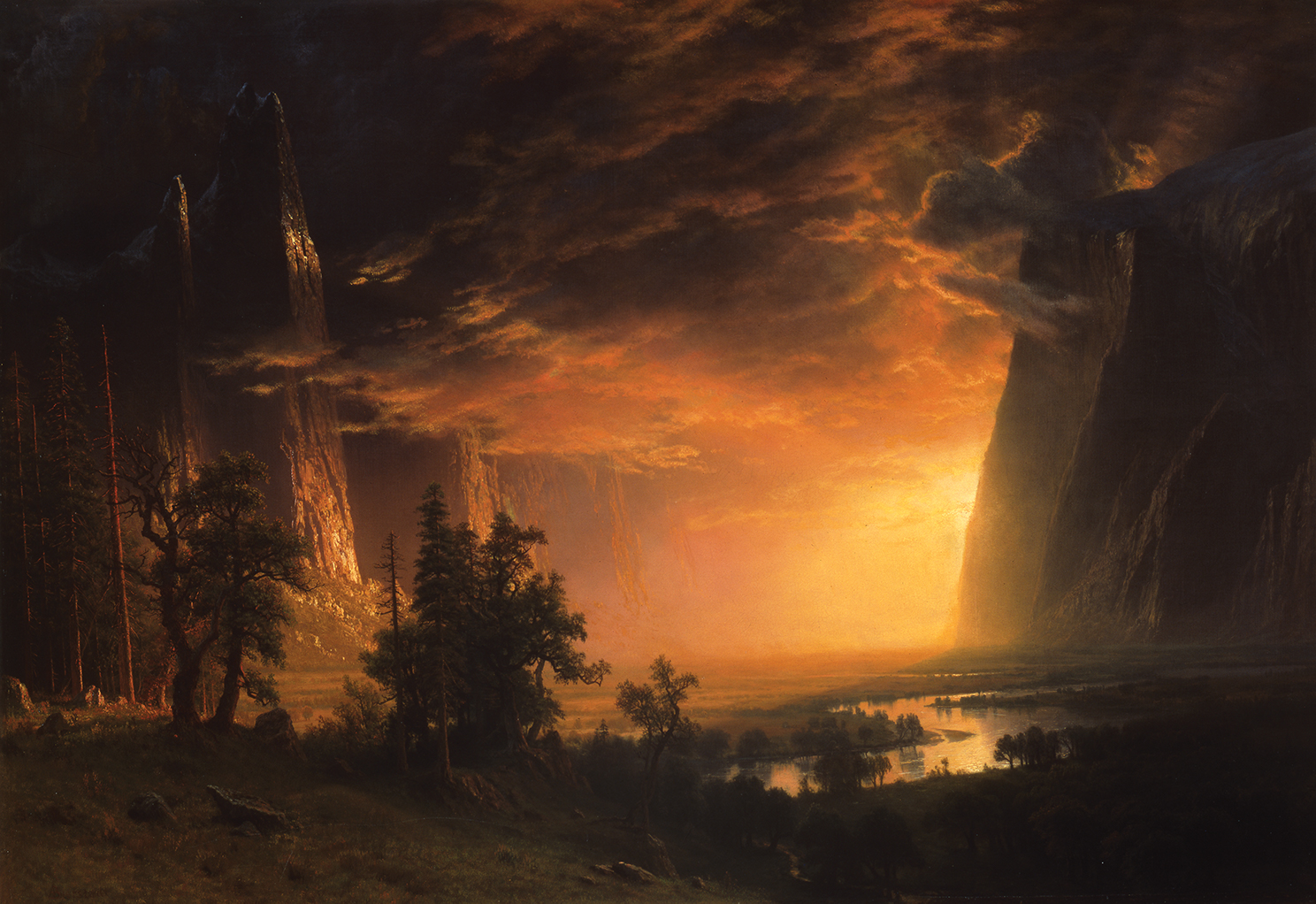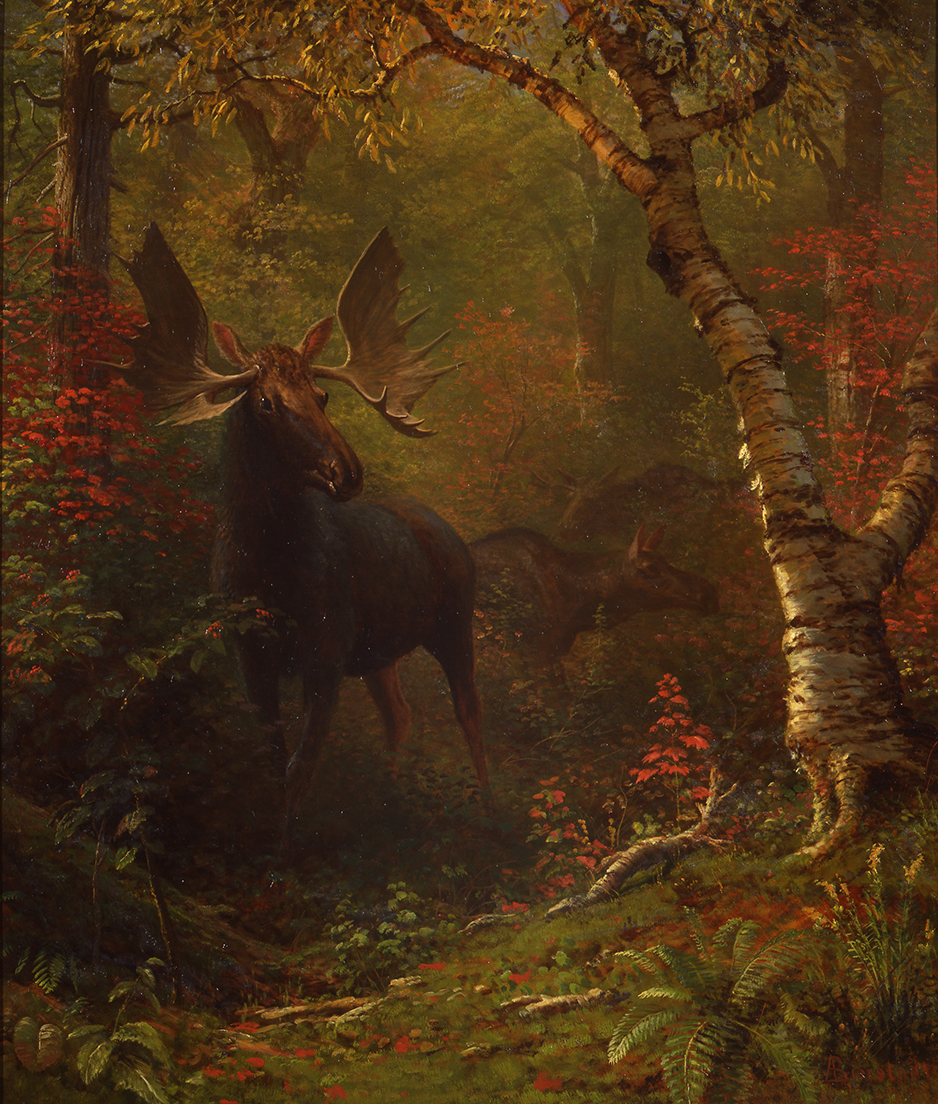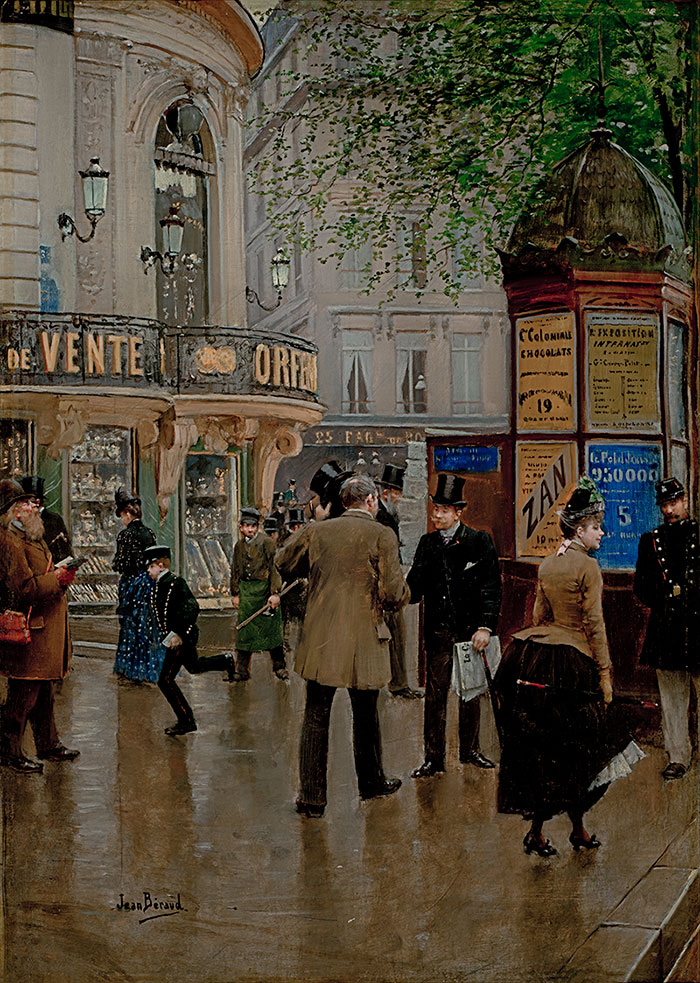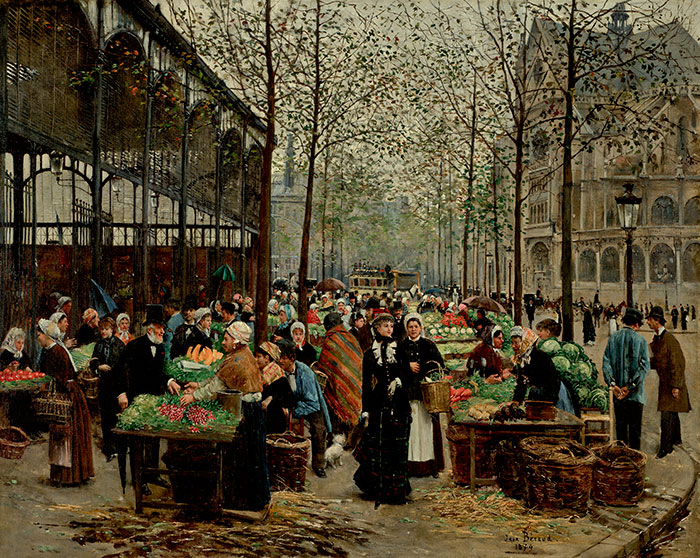
Worms studied at the Ecole des Beaux-Arts beginning in 1849. Early in his career, he worked as a printmaker and illustrator before turning to painting. He debuted at the Salon in 1859, winning medals in 1867, 1868, and 1869.
Worms shared a Paris studio with Vibert and Spanish painter Eduardo Zamacoïs in the 1860s. Worms traveled with his Spanish friends, and drew from Spain the subject of his most well-known genre paintings. Worms studied the works of Diego Velásquez and Francisco Goya. Worms learned from Velásquez the use of color and, from Goya, the uses of satire. Worms was known for his lively scenes of intrigue set against a colorful set.
American collectors sought out Worms’ work. By 1880, his paintings were in the collections of John Wolfe and his daughter Catherine Lorillard Wolfe. She later bequeathed the family’s collection to the Metropolitan Museum of Art, and to James H. Stebbins.
Harry Willson Watrous was born in San Francisco and educated in New York. He studied at the National Academy of Design as an adolescent before going to Europe in about 1881.
Watrous’ early work was similar to Vibert’s in style and subject. In 1883, Sacramento Daily Union correspondent Lucy Harper reported from Paris that she had seen a painting for sale that looked like Vibert’s and “the technique of this little work,” Harper wrote, “…[bespeaks] a master hand.”
In 1884 and 1885, Watrous had paintings accepted at the Paris Salon.
Watrous went home to New York in 1886 where his long career at the center of the New York art world began. He began exhibiting at the National Academy of Design in 1894 and showed there annually until his death.
Many of his canvases showed modern, well-dressed women in profile against dreamy backgrounds, smoking, drinking cocktails, and reading paperback novels—the kinds of activities that must have been common at the turn of the 20th century.
Jehan-Georges Vibert was famous as a painter, a writer, and a man who loved life. The painter entertained everyone who was anyone in Paris with “fantastic entertainments” in his home and studio. Vibert afforded this gracious living through the success of his art, which was popular in both France and with American collectors.
Vibert was born into the Paris art world. Vibert studied at the Ecole des Beaux-Arts from 1856-1862. He showed his first paintings at the Paris Salon in 1863.
Vibert began his career painting mythological and historical scenes but soon switched to scenes of everyday life, or genre paintings, which brought him critical and popular success. His specialty was satirical paintings of clerics, especially of cardinals.
Scenes of cardinals with pretty young women, and of clerics enjoying a fine meal and a roaring fire, made gentle fun of the Catholic Church at a time when anti-clericalism in France was the order of the day.
Eugène Verboeckhoven was known as “the Raphael of sheep”—an appellation that is surprising in a time when paintings of animals were common. Popular in Belgium from the 1820s onwards, he developed an international following.
Verboeckhoven’s father was a sculptor, and the young Eugène first trained at home in Ghent. As a young man, he learned to make lithographs. He entered the Antwerp studio of the animal painter Balthasar-Paul Ommeganck in 1818. Two years later, he made his debut at the Salon in Ghent.
King William I of the Netherlands commissioned an equestrian portrait from Verboeckhoven in 1822. This painting catapulted the young painter to popularity. Verboeckhoven moved to Brussels in 1828 and, two years later, when revolution erupted.
Like Rosa Bonheur (1822-1899) and Constant Troyon (1810-1865), Verboeckhoven gave his animals, and particularly his sheep, a sense of individuality. His creatures are not universal sheep; they are particular creatures.








